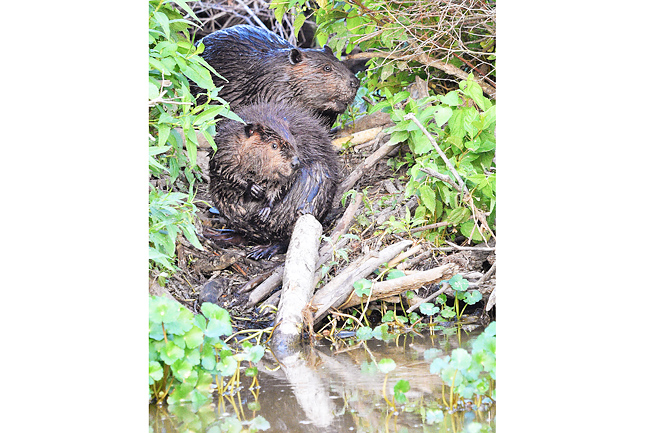Ann Cameron Siegal
THE WASHINGTON POST – When Smokey Bear said, “Only YOU can prevent forest fires,” he’s talking to humans. But humans aren’t the only ones who can help. Beavers are succeeding at fighting fires and reducing wildfire destruction. It’s common sense. Water, soggy ground and well-hydrated vegetation reduce fire’s ability to spread.
Beavers create deep ponds by building dams, then dig finger-like canals to slowly spread that water throughout the flood plain. The stream’s reduced speed allows collected water to seep into the ground where it encourages deep plant roots and an abundance of wildlife to thrive.
California-based ecohydrologist Emily Fairfax studies how water interacts with soil and living things. She wondered whether beaver-created wetlands could survive huge wildfires.
Scientists need data to convince others to consider workable solutions to problems such as rising average temperatures and drought. “We used Google Earth to identify and map beaver dams and channels within fire perimeters,” Fairfax said.
By studying years of aerial photographs from five Western states where major wildfires and droughts occurred, her team showed that beavers create broad underground irrigation systems, decreasing erosion and soil loss. Most important, large beaver wetlands were still green and healthy after a fire.
“Areas without beavers averaged three times more damage than those with beavers,” Fairfax said. “Where you don’t have beavers or rain, plants dry out and become crispy fuel for fires.” Where beavers were allowed to do their thing, the wetlands also became lifesaving oases for wildlife that couldn’t “out fly, out swim or out waddle the flames”.

But what if there are no beavers in an area? Many places prohibit the relocation of beavers, so an alternative is to create a beaver-friendly habitat through basic stream restoration before an environmental crisis occurs.
Using local, natural materials such as logs to build man-made starter dams can increase water depth, creating conditions that encourage beavers to move in and take over maintenance of the dams while expanding the wetland habitat.
Beavers aren’t always wanted in an area because humans want to adapt the landscape to fit their needs, draining wetlands and building houses in floodplains.
Fortunately, there are many tools for flood control and tree protection to make coexisting with beavers easier for landowners.
After identifying fire-prone areas, communities can reduce a fire’s capacity to become an extreme event by taking advantage of beavers’ low-tech, natural and free engineering abilities.
Fairfax said her original hypothesis shifted from “where can this happen” to “is there anywhere where this cannot happen?”
“The more rivers and streams you have in healthy conditions,” she said, “the more fire resistant a region will be.”





